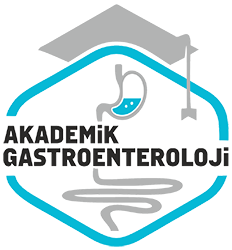Nisan 2012
Dispeptik olgularda ultrasonografinin yeri
The place of abdominal ultrasonography in dyspeptic patients
- Ana Sayfa
- Sayılar
- Nisan 2012
- Dispeptik olgularda ultrasonografinin yeri...
Özet
Giriş ve Amaç: Dispepsi, yüksek sıklıkta görülmesi nedeniyle toplumlarin önemli bir Sağlık sorunudur. Gastroskopi ve üst batin ultrasonografisi dispeptik hastalarda En sık kullanılan tetkiklerdir. Çalışmamızin amacı, dispepsi tanısı olan hastalarda üst batin ultrasonografi bulgularının retrospektif olarak değerlendirilmesi ve ultrasonografinin dispeptik olgulardaki yerinin arastirilmasidir. Gereç ve Yöntem: Celal Bayar Üniversitesi Tip Fakültesi Gastroenteroloji Polikliniğinde dispepsi tanısı alan ve batin ultrasonografisi yapilmis olan 180 olgu ve 176 kontrol grubu çalışmaya dahil edildi. Bulgular: Dispepsi tanıli Hastaların %23?ünde, kontrol grubunun ise %51?inde batin ultrasonografisi normal olarak saptandi. Normal ultrasonografi bulgularının kontrol grubunda dispeptik olgulara göre istatistiksel anlamli olduğu saptandi (p<0.00004). Dispepsi tanıli Hastaların %36?sinda, kontrol gurubunun ise %13?ünde batin ultrasonografisinde safra kesesi tasi olduğu saptandi. Safra kesesi tasi görülme sikliginin dispeptik olgularda, kontrol gurubuna göre istatistiksel anlamli olduğu görüldü (p<0.0001). Sonuç: Ultrasonografi, dispeptik olgularda mutlaka tanıda kullanilmasi gereken laboratuvar tetkiklerinden biri olmalidir.
Abstract
Background and Aims: Dyspepsia is an important health problem in all societies due to its high incidence. Gastroscopy and abdominal ultrasound are the most commonly investigative tools in dyspeptic patients. The aim of this study was to investigate the ultrasonography findings in dyspeptic patients retrospectively. Materials and Methods: One hundred and eighty patients with a diagnosis of dyspepsia and 176 control subjects were included in the study of the Department of Gastroenterology, Celal Bayar University Medical School, Manisa. Results: The abdominal ultrasonography was normal in 23% of patients with dyspepsia and in 51% of patients in the control group, and normal ultrasonography was significantly more prevalent in the control group than in dyspeptic patients (p<0.0004). 36% of patients with dyspepsia and 13% of the control group had gallstones in abdominal ultrasonography, and the difference between groups was significant (p<0.0001). Conclusions: Abdominal ultrasonography should be considered in patients with dyspepsia.



